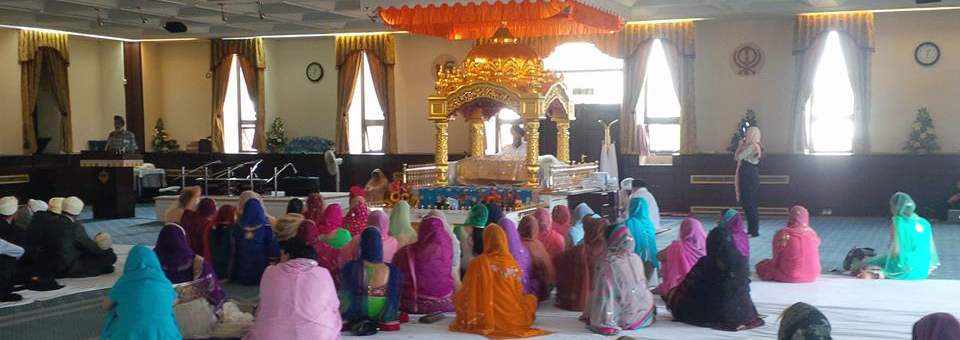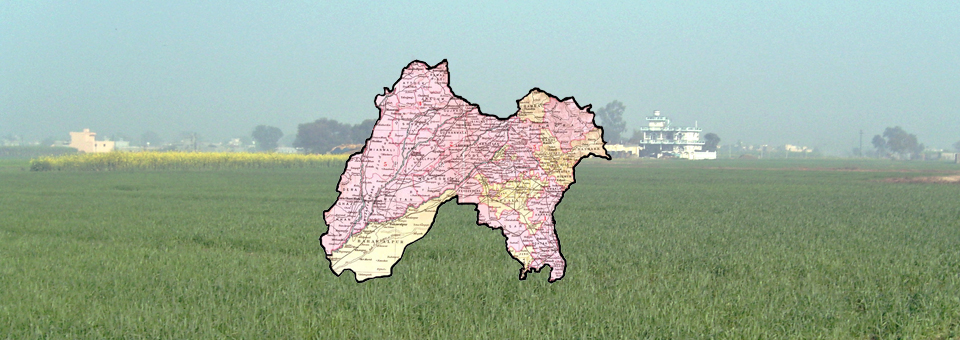In a previous article, I discussed the importance of various monuments related to Sikh history and how they are in a neglected state. There is a place in the north-west of Punjab situated on the banks of the famous Beas river named Hargobindpur – but mostly we refer to it as Shri Hargobindpur Sahib. This city was blessed with the noble presence of our revered Gurus, especially the fifth Guru, Guru Arjun Dev Ji as this was the home of his ancestral lands. In fact he laid the foundation of this place where Guru Hargobind Sahib Ji too stayed for some time. Regrettably today, this city’s symbol of our rich glory is in desperate need of attention.
Hargobindpur has the unique distinction of being the first political capital of the Sikhs. Guru Arjun Dev Ji named this city in honour of his son, Guru Hargobind Sahib Ji. The sixth Guru fought two battles here – one against a relation of the infamous Chandu who was partly-responsible for the martyrdom of Guru Arjun Dev Ji; and one a battle lasting 14 days in which Mughal forces led by Abdullah Khan were defeated. During this last battle the town was completely destroyed and so the Guru requested Baba Buddha Ji to redevelop it.
The honoured and much respected Sikh General Sardar Jassa Singh Ramgarh later established its lost glory by making it the political capital of the Khalsa Raj, before Maharaj Ranjit Singh’s time when the capital was shifted to Lahore. Hargobindpur became a centre of resistance against the Mughals under Sardar Jassa Singh who had built many buildings in memory of the sixth Guru. He had built a huge fort symbolising the glory of the Sikhs and strategically surrounded the city with a great wall, opening out on just five entrance gates, out of which now only one can be seen – and that that too in a neglected and worn-out state.
This political capital from Sikh history has been forgotten. We Sikhs tend to over-glorify our religious angles and give a secondary importance to our history – particularly that history which relates to our political glory in power. The British Empire took extra care after the Anglo-Sikh Wars to enhance the Sikh religious angle so that we remain away from any symbol of political importance. And during the period of India’s partition, Lahore was taken away from the Sikhs and the city of Ferozepur was added in lieu; the reason was to keep us away from our glorious period of the Khalsa Raj and so Sikh-thought remained away from aspirations of political power. No doubt the world is getting smaller, but we as Sikhs are still miles away from Lahore, free passage to which is unthinkable still.
The depleted state of our first Sikh capital city’s structure at Hargobindpur would not be so if it was not of political importance. In the same way most of the monuments related to the Anglo Sikh Wars are in deep distress barring a few, but the seats of our religious importance are overly cared for and huge sums of money is spent daily that have taken them into a state of excess. The neglect of a Sikh political angle suits the present day leaders of both the Panth and the State. The spirit of the Sikhs is deeply wounded and has not recovered from the turmoil of 1984. Monuments like those at Hargobindpur are crying for attention and can become symbols of inspiration in our struggle.
Many other Sikhs have called Hargobindpur their home including Mata Ganga ji, Bhai Bidhi Chand, the family of Panj Pyara Bhai Daya Singh, and more recently the world famous Sikh painter Sri Sobha Singh who was born in the city. Perhaps one day the Sikh Panth will again look to this place as our home – the foundations of our first Sikh capital are there, but they are crying out for us to care.






